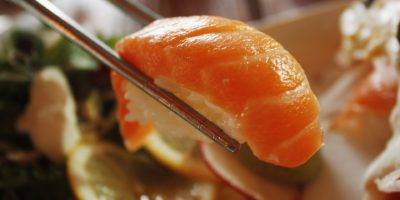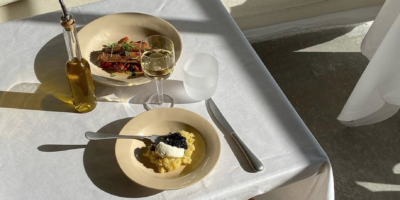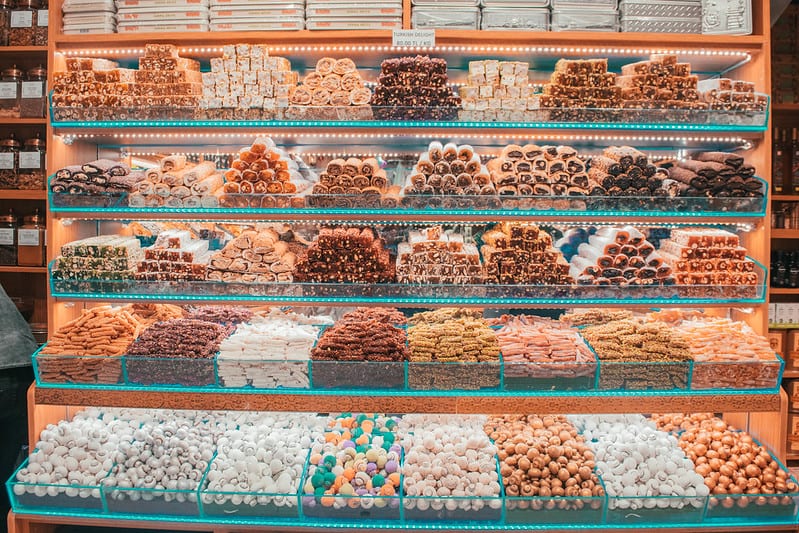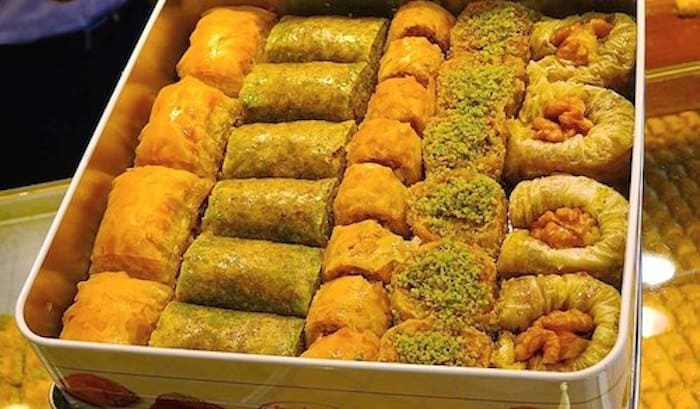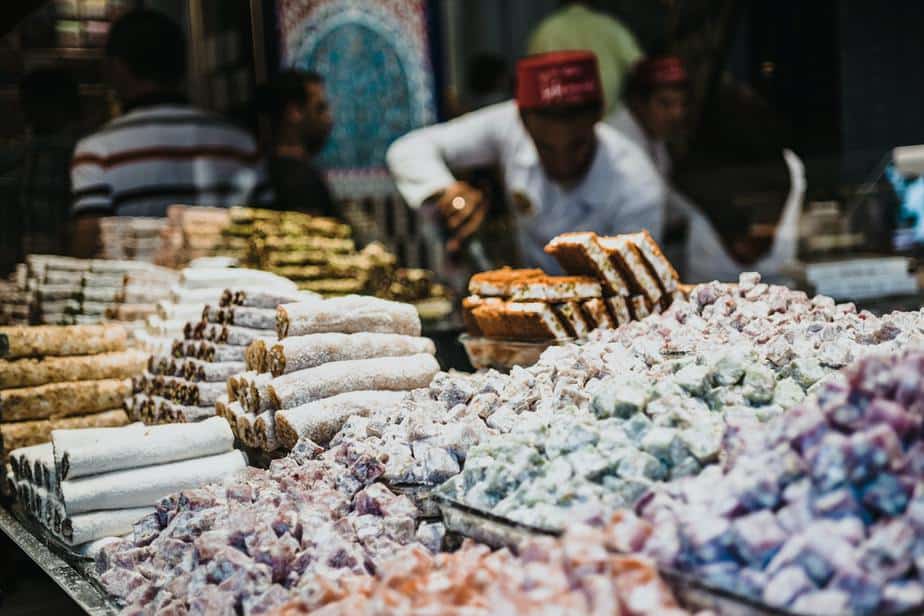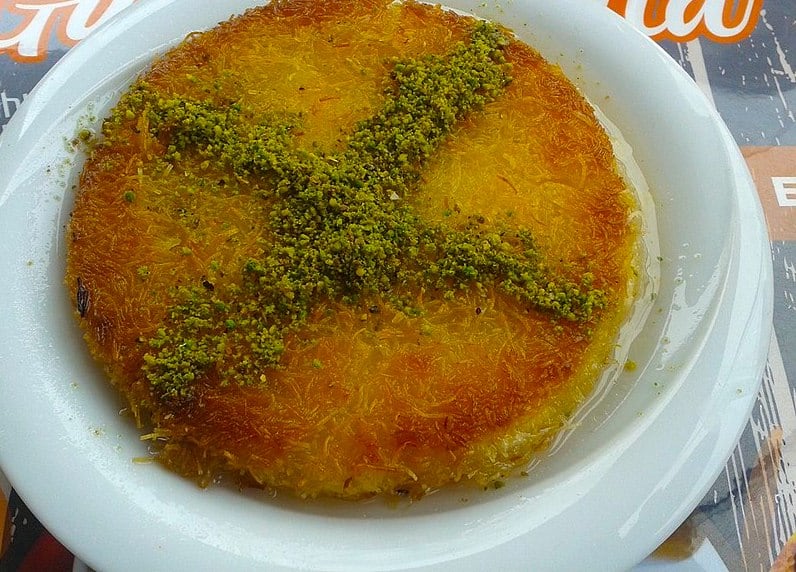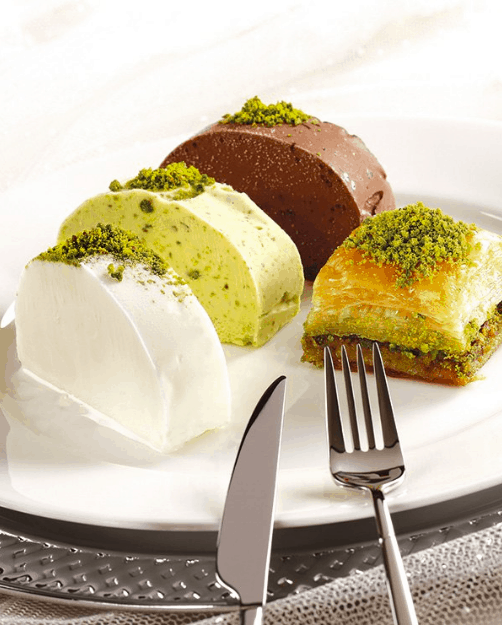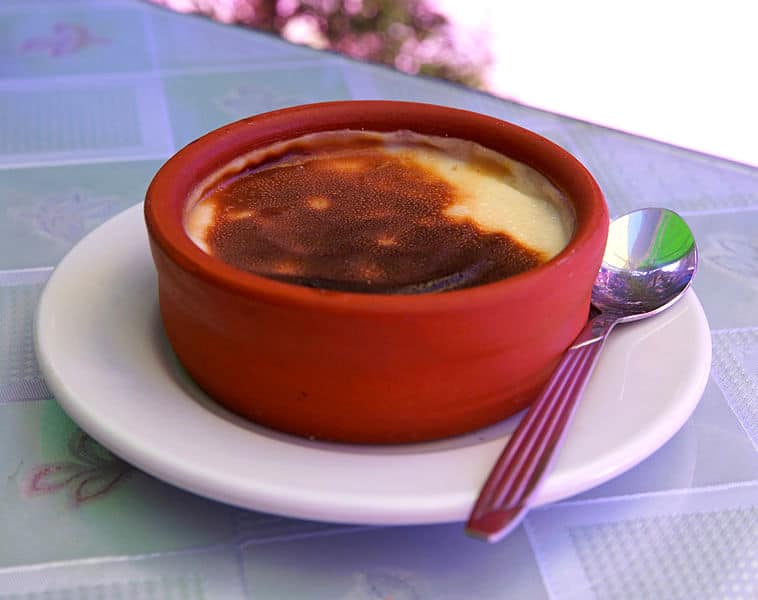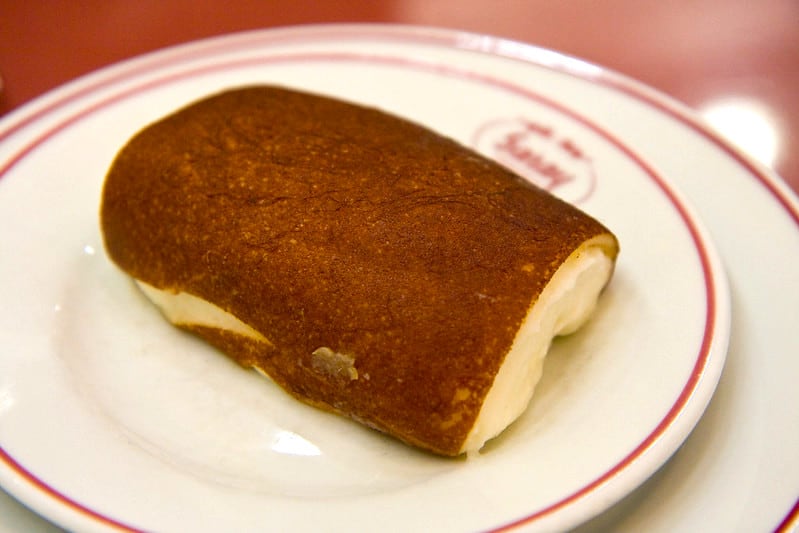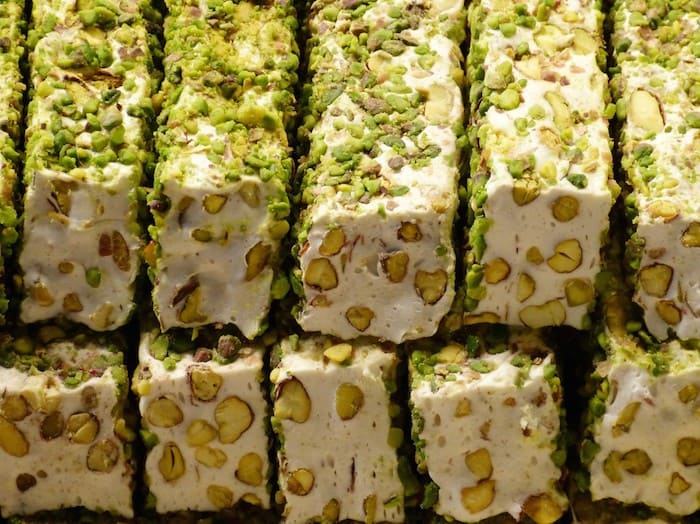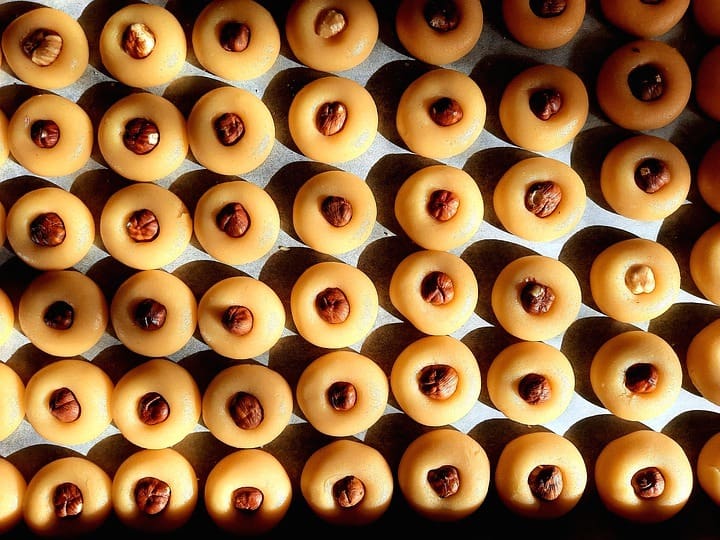Top 10 Turkish Desserts
Food culture in Turkey is a culmination of many cuisines. It highlights the multicultural and multiethnic food culture that existed in the former Ottoman Empire.
Given the country’s geographical location, the cuisine was hugely influenced by the historical empires and cultures that ruled the land. Local Anatolian cuisine, the exchanges of people, culture and food in the Mediterranean, Europe and the Middle East have produced a delightfully long list of dishes. Today, the legacy of this historical mix of cultures and people have produced one of the most amazing cuisines in the world!
This wonderful mix of cultures is now enjoyed today by both locals and tourists alike. In the East, spices are used abundantly. Conversely, in Western Turkey, there’s an emphasis on olive oil, seasonal vegetables and wild greens.
However, it’s the mouth-watering desserts that’s a cherry on the top after a hearty meal. Sweets and desserts comprise an important part of this food culture of the country. It is especially enjoyed at festivals, commemoration events such as those in the Islamic month of Muharrem. They are also specially prepared by family members and friends for ceremonial events such as funerals, wakes and mourning periods. In Turkey, Ramadan is even called Şeker Bayramı or sugar festival. Family members visit each other, especially the young pay their respects to their elders. Visitors are offered sweets and tea in return, whereas, children are offered cash gifts.
In keeping with the emphasis on freshness, seasonal fruits are baked into sweet desserts and preserves enjoyed at a Turkish-style breakfast. For example, pumpkin, quince and fig are popular and enjoyed with a dollop of clotted cream called kaymak. Below we’ve listed the top 10 Turkish desserts for the uninitiated. There are a variety of Turkish desserts to try, especially in Istanbul, its most popular city. But of course, there are tons of other options such as Revani, Şambali, Kadayıf, Trileçe and Kemalpaşa. Try them all or take your pick and enjoy one or two with a hot cup of çay!
1. Baklava
A classic dessert in the country, baklava is well-known around the world. Baklava is a popular sweet in the Levant region, Greece, the Balkans and the Middle East in general.
While its origins are unknown and fiercely debated, baklava in Turkey has its roots in the rich Ottoman cuisine, developed over at the Topkapı Palace. Turkish style baklava with its sweet syrupy version is delicious with a cup of tea in tulip-shaped glasses. A variety of fillings such as almonds, walnuts and pistachios are used, for example. In the east of Turkey, pistachios are used, while in the Aegean region, almonds are more common.
Recipes with thin layers of dough are common throughout the region, including a Turkish dessert called Güllaç made with rosewater. Moreover, both baklava and güllaç are both a staple dessert during the Islamic holy month of Ramadan. It is currently underway until the 23rd of May. Baklava is served at the end of this month-long fasting period. In Turkey, the Ramadan Festival or Sugar festival, otherwise also known as Eid-ul-Fitr heavily features this dessert. It is offered to visitors and sold in many sweet shops.
The best baklava in town can be had at Karaköy Güllüoğlu, in the hip Karaköy neighbourhood of Galata, on the European side of Istanbul. Alternatively, a classic choice is at Hafiz Mustafa in the Sultanahmet Area.
2. Turkish Delight or Lokum
Lokum is known around the world by its other name: Turkish Delight. These chewy transparent squares of sugar gel, water and starch come in numerous flavours, with the addition of essences. The popular flavours are rosewater, mastic and peppermint, for example. Sometimes it’s also filled with pistachios, hazelnuts or apricots and dusted with powdered sugar on top.
It is believed that the confection was created in Turkey by Hacı Bekir in the late 1700s. Initially produced with honey, molasses, water and flour, the lokum that we know today uses starch and refined sugar. Hacı Bekir’s family, now in its fifth generation, still operates the small original shop called Ali Muhiddin Hacı Bekir Lokumları in Fatih, very close to the Egyptian Bazaar. Visit this small shop and try some of the lesser-known lokum flavours.
3. Kunefe
Kunefe is a speciality dessert from the region of Hatay in the East, in particular, the city of Antakya. Kunefe is also popular in many other Middle Eastern countries that border Turkey and in the Levent.
Strands of dough (similar to vermicelli but smaller) are soaked in butter and baked with a layer of cheese in between them. The special raw cheese is local to the Hatay province and once it’s baked, it’s topped with pistachios and walnuts. Served piping hot right out of the oven, it’s a mouthwatering dessert that is sometimes topped with kaymak as well.
Try it at Akdeniz Hatay Sofrası in the old district of Sultanahmet or at Asi Künefeleri which has branches around the city.
4. Maraş Dondurma
The southeastern city of Karamanmaraş gives its name to the famous and traditional Turkish-style ice cream called Maraş Dondurma. It is made from goat milk, mastic gum and salep, a powder of dried orchid tubers. This mix makes the ice cream thick and stretchy, and thus, has to be cut with a knife.
Slabs of ice cream hidden in cold containers with a traditionally dressed ice-cream seller are a regular scene in Taksim, especially on Istiklal Avenue. To the uninitiated, traditional ice-cream sellers play trick or treat on their customers. They entertain you by playing some tricks while serving you the most delicious scoops of ice cream!
Mado is a well-known Turkish brand and is a leader in producing this traditional dessert. It offers many flavours, often in combination with baklava and great presentations. Grab a plate at their many branches around the city!
5. Sütlaç
Baked in the oven to perfection, this milk-based rice pudding is chilled before it’s served. A simple recipe which involves rice cooked slowly with milk and sugar. Dried raisins are sometimes added and garnished with cinnamon on top. Moreover, it can be baked in the oven and hence called Fırın Sütlaç. It is baked in earthenware ramekins and forms a lightly burnt leathery layer on top. It’s a hearty dessert with humble ingredients!
Milk-based puddings are a staple in Turkish cuisine and include Kazandibi too (read below). Other than sütlaç, there’s also ‘muhallebi‘ (pudding) which is made with sugar, starch and milk. Try both puddings and many other sweet desserts at muhallebici shops, for example.
6. Kazandibi
Another milk-based dessert, Kazandibi is another variety of the interesting pudding calledTavuk göğsü (Chicken breast). It is a fascinating dessert that’s made with shredded chicken breast that’s fresh, milk, cornstarch and rice flour.
Kazandibi literally means ‘the bottom of the pan’ in Turkish. It is the caramelized variety of the chicken breast pudding. The pudding is left to burn and then scrapped from the bottom. It is served folded and rolled so that the burnt layer is on the top and contrasts with the sweetness of the pudding.
7. Helva
There are a fair few Helva dishes in Turkey. But helva or halwa is a common snack/dessert across the Middle East, India and Central Asia.
Helva in Turkey is an umbrella term for desserts that involve a few different ingredients: flour-based, another with semolina and lastly, one with tahini.
Tahini helva is usually mixed in with either cacao or the more popular version with pistachios. Of course, it can also be enjoyed plain. Plain tahini helva is a basic dish of sesame seed paste, sugar or honey and flour and oil. Homemade versions are prepared in small terracotta ramekins and baked in the oven. Sometimes pine nuts or other nuts are sprinkled on top.
Additionally, most supermarkets stock Tahin Helva that is mass-produced. You can also find it in popular confectionaries such as Koska in Taksim. However, it’s the smaller speciality shops where you should be getting your sweet fix. When you visit a dried nuts and fruits shop, ask for ‘tahin helva.’
On the other hand, Semolina helva (Irmik) and flour (Un) helva are usually prepared at home. Both types of helva can be made with minimal ingredients. Thus, it’s often made in Turkey year-round and often offered to visitors at funerals or on religious occasions.
8. Aşure
This Turkish dessert is also called Noah’s pudding. It is also associated with the Islamic month of Muharrem, among other important religious dates.
It contains a bewildering number of ingredients that usually aren’t cooked together. These are rice, wheat, barley, beans, chickpeas, dried nuts, raisins and pomegranate. Fresh fruits and dried nuts are used to decorate it. Turkish households make the porridge-like dessert and share with friends and family on the 10th day of Muharrem, especially as it’s the day also known as Ashura. It’s a dessert that’s almost like a bowl of sweet soup! Try it at sweet/pastry shops such as Saray Muhallebicisi at their various branches across the city.
9. Şekerpare
Round semolina cakes baked and topped a hazelnut piece with thick lemon and sugar syrup is to die for! The name itself is cute, translating to ‘sweet piece’. This easy dessert is enjoyed with tea and needs only a few ingredients. Sometimes ingredients vary according to regions — some use butter while others use vegetable oil. In the end, you’ll want more of these melt-in-your-mouth sweet cookies.
Moreover, sweet shops usually carry this shaped either in a round or oval shape. A piece of nut, usually an almond or hazelnut is placed on top. A traditional treat, it’s made in homes around the country at religious festivals and offered to guests and visitors.
10. Lokma
Lokma is a syrupy dessert where the dough is fried into balls. It is usually associated with the Aegean city of Izmir in Turkey. The word ‘Lokma’ translates as ‘bite’. The small syrupy balls melt into your mouth with every bite!
It is distributed on the streets of Izmir and has a religious and ceremonial association. As such, it’s used for charity for those that have passed away. Parked at street corners, Lokma sellers are engaged by the family of the deceased. They make it fresh before offering them to passersby. In turn, those enjoying it pass on their prayers to the deceased.
Now that we’ve got the Top 10 Desserts out of the way, there are lots of other desserts that you may see while on holiday in Turkey. If you’re here during the times when fruit desserts are available, then you should definitely try Quince and Pumpkin, both baked with thick syrup and enjoyed with a dollop of clotted cream!
Moreover, they are available in sweet and pudding shops called Muhallebici sweet shops. Offering a variety of dishes, these kinds of sweet shops have a casual atmosphere. Saray Muhallebicisi is probably the most well-known pudding shop around the city, with many branches.
Some other sweets such as candied Chestnuts also called Kestane Sekeri are a unique treat. The sweet is from the city of Bursa. Confectioneries such as Koska or Seyidoğlu carry them, along with some of the most popular desserts mentioned above. Another unique treat is of fruit-shaped marzipan in the small shop of confectioner Cafer Erol on the Asian side in Kadıköy. Make sure to try another dessert at Balyan Patisserie there called Kup Griye. In Moda, you’ll find endless options for desserts.
Take a look around the shop, order a few different desserts and enjoy it with tea and coffee at any time of the day. It can be a great pit stop after a busy day walking around the city!
Planning a trip to Paris ? Get ready !
These are Amazon’s best-selling travel products that you may need for coming to Paris.
Bookstore
- The best travel book : Rick Steves – Paris 2023 – Learn more here
- Fodor’s Paris 2024 – Learn more here
Travel Gear
- Venture Pal Lightweight Backpack – Learn more here
- Samsonite Winfield 2 28″ Luggage – Learn more here
- Swig Savvy’s Stainless Steel Insulated Water Bottle – Learn more here
Check Amazon’s best-seller list for the most popular travel accessories. We sometimes read this list just to find out what new travel products people are buying.


